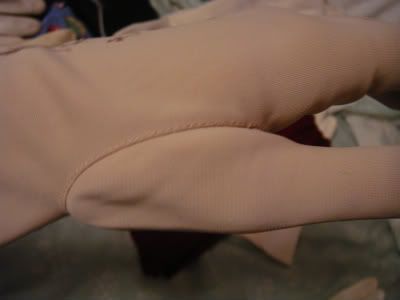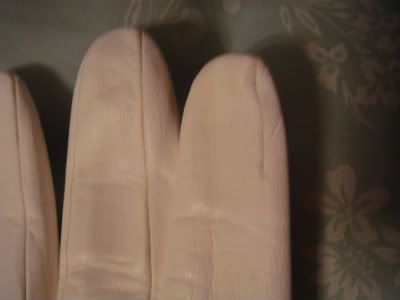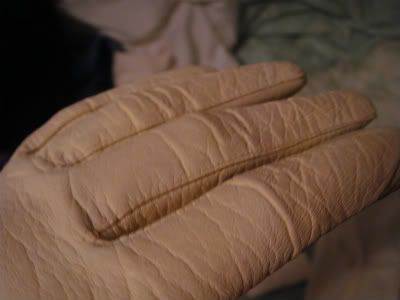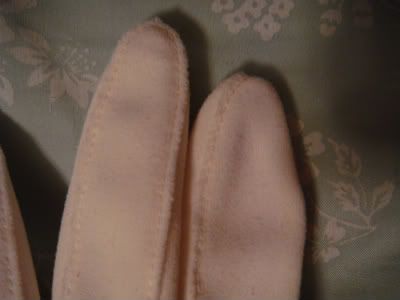I'm no expert on gloves. All of the information here I've learned from my own experience and trial and error. When I get new information I will update and link back to this page.
First thing I will say, and probably the most important thing, is always try the gloves on! Women used to have much smaller hands then are common now. Often this will be obvious when looking at vintage gloves, but other times the fingers on the gloves will be deceptively long. Always try on both gloves as one hand, usually the hand you write with, tends to be larger than the other. Also be sure to move your fingers around and make sure you have full range of motion. Sometimes gloves will feel comfortable, like they fit, but are difficult to move in and sometimes they will feel like they don't fit, but still grant full range of motion. It's all about what you feel comfortable in! It is also important to remember the material when making your decision.
This pair has most issues with the thumb. The inside, fleshy part of the thumb is actually farther down than my actual thumb (I hope that made sense, it was really hard to explain) and there is more fabric going around the thumb than the hole, causing the strange, balloon effect shown here.
The three most common materials for vintage gloves are cloth, leather, and suede. Though satin is a common material in modern/costume gloves, it was not often used before recently. Each has it's own pros and cons, and things to remember.
First, leather gloves tended to be made of very soft lambskin. These provide the most give and can stretch to fit a slightly larger hand. Because of their warmth, these are often unsuitable for warmer climates. The condition of the pieces I've seen has varied wildly from unstretched new pairs and pliable stretched pairs to very well "loved" pairs with no give like this example
Last is suede, the least common material. Suede gloves are similar to leather gloves but have limited, if any, stretch to them. I also don't recommend suede for driving gloves as the palms of my pair smoothed down after I tried driving with mine.
That's it for this installment. I hope this has been useful and be sure to come back (hopefully tomorrow) for the second half, Construction






No comments:
Post a Comment